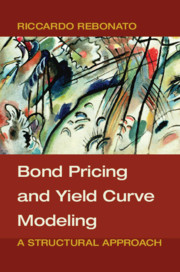Book contents
- Frontmatter
- Dedication
- Contents
- Acknowledgements
- Symbols and Abbreviations
- Part I The Foundations
- Part II The Building Blocks: A First Look
- Part III The Conditions of No-Arbitrage
- Part IV Solving the Models
- Part V The Value of Convexity
- 20 The Value of Convexity
- 21 A Model-Independent Approach to Valuing Convexity
- 22 Convexity: Empirical Results
- Part VI Excess Returns
- Part VII What the Models Tell Us
- References
- Index
20 - The Value of Convexity
from Part V - The Value of Convexity
Published online by Cambridge University Press: 25 May 2018
- Frontmatter
- Dedication
- Contents
- Acknowledgements
- Symbols and Abbreviations
- Part I The Foundations
- Part II The Building Blocks: A First Look
- Part III The Conditions of No-Arbitrage
- Part IV Solving the Models
- Part V The Value of Convexity
- 20 The Value of Convexity
- 21 A Model-Independent Approach to Valuing Convexity
- 22 Convexity: Empirical Results
- Part VI Excess Returns
- Part VII What the Models Tell Us
- References
- Index
Summary
“Right now it's only a notion, but I think I can get money to make it into a concept, and later turn it into an idea.”
A movie producer at a Hollywood party in Woody Allen's Annie HallTHE PURPOSE OF THIS CHAPTER
In this chapter we put some flesh around the theoretical bones of Chapter 10. More precisely, earlier in the book I have argued that convexity is intrinsically different from risk premia (whose value can be realized with essentially static strategies). I made the point that the value of convexity can be harvested only by engaging in a very active hedging strategy, akin to the practice of gamma trading in the derivatives domain. In this chapter, I provide an expression for the value of convexity and discuss the actual hedging strategies that must be established in order to capture the value of convexity.
I do so first by looking at the stylized (and not very realistic) case of the Vasicek model, and then by employing more general and realistic affine models. The more general treatment presented in Sections 20.4 and to 20.5 requires some of the formalism and of the vector notation that is introduced in Chapter 18. The reader who is not familiar with vector notation may want to go back to Chapter 18 and refresh her memory.
By the end of the chapter we will know what the value of convexity should be, if the model of our choice is correct, and if it has been properly calibrated. These are big if s. We will therefore explore in the next chapter to what extent we can obtain (quasi-) model-independent results about convexity.
BREAK-EVEN VOLATILITY – THE VASICEK SETTING
A sketch of the map of the road ahead is as follows. We start by placing ourselves in a Vasicek world. We are going to use two bonds to create a risk-less portfolio – a portfolio, which, as we know, qua riskless can only earn the riskless rate. Since, as we also know, working with bond prices is unpleasant, we swiftly change coordinates and work in terms of their yields. This is handy, but conceptually irrelevant.
- Type
- Chapter
- Information
- Bond Pricing and Yield Curve ModelingA Structural Approach, pp. 351 - 370Publisher: Cambridge University PressPrint publication year: 2018



